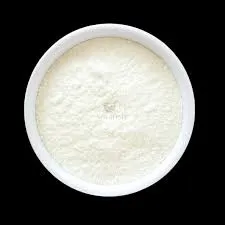
Nov . 25, 2024 14:47 Back to list
hpmc ingredient
Understanding HPMC Ingredients A Comprehensive Overview
Hydroxypropyl Methylcellulose (HPMC) is a versatile ingredient widely used across various industries, including pharmaceuticals, food, cosmetics, and construction. As a semi-synthetic polymer derived from cellulose, HPMC is known for its unique properties, making it an essential component in many applications. This article delves into the characteristics, advantages, and applications of HPMC, shedding light on why it holds significant importance in both industrial and consumer products.
What is HPMC?
HPMC is produced by the chemical modification of cellulose, which is a natural polymer obtained from plant cell walls. The modification involves substituting hydroxyl groups (-OH) with hydroxypropyl and methyl groups. This alteration enhances the solubility and functional properties of cellulose, transitioning it into a highly valuable ingredient that can dissolve in hot or cold water.
Properties of HPMC
HPMC boasts a range of beneficial properties that contribute to its wide use
1. Hydrophilic Nature HPMC is water-soluble, allowing it to create gels and films that can encapsulate active ingredients, making it especially useful in pharmaceutical formulations.
2. Thickening Agent Its ability to increase the viscosity of solutions makes it an effective thickening agent, utilized in various products to improve texture and stability.
3. Binding and Film-Forming Capabilities HPMC can act as a binder in tablets and as a film-former in coatings, enhancing the mechanical properties of products.
4. Biocompatibility Being derived from natural cellulose, HPMC is generally regarded as safe and biocompatible, making it suitable for use in food and medical products.
5. Temperature Sensitivity HPMC exhibits thermal gelation properties, allowing it to behave differently based on temperature changes, which can be strategically harnessed in formulations.
Applications of HPMC
The multifaceted nature of HPMC facilitates its application across diverse industries
hpmc ingredient

1. Pharmaceuticals
In the pharmaceutical industry, HPMC plays a crucial role as a binder in tablet formulations, providing structural integrity and controlled release of active ingredients. It is also used in eye drops, where its viscosity helps to prolong the retention time of the solution on the ocular surface. Additionally, HPMC is implemented in capsule manufacturing as a vegetarian alternative to gelatin.
2
. Food IndustryHPMC is utilized as a food additive, known for its thickening, emulsifying, and gelling properties. It is commonly found in gluten-free products, where it mimics the texture provided by gluten, thereby enhancing the quality of baked goods. Furthermore, HPMC serves as a stabilizer in sauces and dressings, preventing separation and maintaining consistency.
3. Cosmetics
In cosmetic formulations, HPMC acts as a thickener and stabilizer in creams, lotions, and gels. Its ability to form a protective film on the skin enhances the performance of various skincare products. Additionally, HPMC is appreciated in hair care products for its film-forming properties, allowing for better styling and hold.
4. Construction
HPMC is extensively used in the construction industry as an additive in mortars, tile adhesives, and plasters. It improves the workability, adhesion, and water retention capacity of these materials, facilitating better application and durability of construction products.
Advantages of Using HPMC
The incorporation of HPMC in formulations yields numerous benefits
- Versatility HPMC can be tailored to meet specific needs, offering flexibility in formulation development. - Stability Its chemical structure provides excellent stability against heat and pH variation, maintaining product integrity. - Safety With its non-toxic and non-irritating nature, HPMC is a safe option for a wide range of applications, particularly in foods and pharmaceuticals.
Conclusion
Hydroxypropyl Methylcellulose is a remarkable ingredient driven by its diverse functionalities and properties. From pharmaceuticals and food to cosmetics and construction, HPMC demonstrates its versatility, standing out as a crucial component in various formulations. As industries continue to evolve and innovate, the demand for HPMC is likely to grow, cementing its role as an indispensable ingredient in modern products. Understanding HPMC’s characteristics and applications empowers manufacturers and consumers alike to appreciate its significance in everyday life.
-
Versatile Hpmc Uses in Different Industries
NewsJun.19,2025
-
Redispersible Powder's Role in Enhancing Durability of Construction Products
NewsJun.19,2025
-
Hydroxyethyl Cellulose Applications Driving Green Industrial Processes
NewsJun.19,2025
-
Exploring Different Redispersible Polymer Powder
NewsJun.19,2025
-
Choosing the Right Mortar Bonding Agent
NewsJun.19,2025
-
Applications and Significance of China Hpmc in Modern Industries
NewsJun.19,2025







